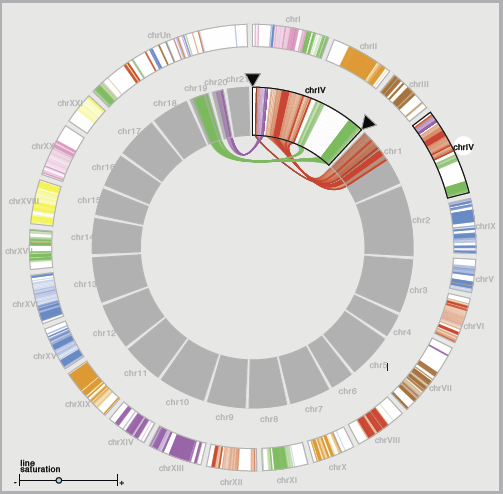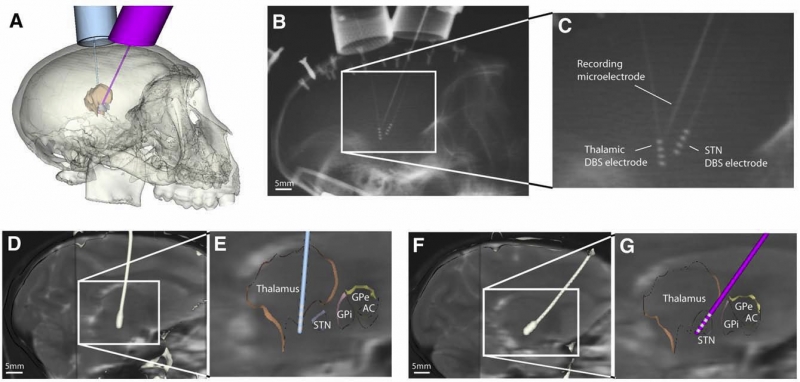SCI Publications
2009


H. Martinez, S. Prajapati, C. Estrada, F. Jimenez, I. Wu, A. Bahadur, A. Sanderson, C.R. Johnson, M. Shim, C. Keller, S. Ahuja.
“Microscopic Computed Tomography–Based Virtual Histology for Visualization and Morphometry of Atherosclerosis in Diabetic Apolipoprotein E Mutant Mice,” In Circulation, Vol. 120, No. 821--822, 2009.


Y. Marzouk, D. Xiu.
“A Stochastic Collocation Approach to Bayesian Inference in Inverse Problems,” In Communications in Computational Physics, Vol. 6, No. 4, pp. 826--847. 2009.
DOI: 10.4208/cicp.2009.v6.p826
We present an efficient numerical strategy for the Bayesian solution of inverse problems. Stochastic collocation methods, based on generalized polynomial chaos (gPC), are used to construct a polynomial approximation of the forward solution over the support of the prior distribution. This approximation then defines a surrogate posterior probability density that can be evaluated repeatedly at minimal computational cost. The ability to simulate a large number of samples from the posterior distribution results in very accurate estimates of the inverse solution and its associated uncertainty. Combined with high accuracy of the gPC-based forward solver, the new algorithm can provide great efficiency in practical applications. A rigorous error analysis of the algorithm is conducted, where we establish convergence of the approximate posterior to the true posterior and obtain an estimate of the convergence rate. It is proved that fast (exponential) convergence of the gPC forward solution yields similarly fast (exponential) convergence of the posterior. The numerical strategy and the predicted convergence rates are then demonstrated on nonlinear inverse problems ofvarying smoothness and dimension.
Keywords: Inverse problems, Bayesian inference, stochastic collocation, generalized polynomial


M.D. Meyer, T. Munzner, H. Pfister.
“MizBee: A Multiscale Synteny Browser,” In IEEE Transactions on Visualization and Computer Graphics (Proceedings of InfoVis 2009), Vol. 15, No. 6, Note: Honorable Mention for Best Paper Award, pp. 897--904. 2009.
In the field of comparative genomics, scientists seek to answer questions about evolution and genomic function by comparing the genomes of species to find regions of shared sequences. Conserved syntenic blocks are an important biological data abstraction for indicating regions of shared sequences. The goal of this work is to show multiple types of relationships at multiple scales in a way that is visually comprehensible in accordance with known perceptual principles. We present a task analysis for this domain where the fundamental questions asked by biologists can be understood by a characterization of relationships into the four types of proximity/location, size, orientation, and similarity/strength, and the four scales of genome, chromosome, block, and genomic feature. We also propose a new taxonomy of the design space for visually encoding conservation data. We present MizBee, a multiscale synteny browser with the unique property of providing interactive side-by-side views of the data across the range of scales supporting exploration of all of these relationship types. We conclude with case studies from two biologists who used MizBee to augment their previous automatic analysis work flow, providing anecdotal evidence about the efficacy of the system for the visualization of syntenic data, the analysis of conservation relationships, and the communication of scientific insights.


M. Milanic, V. Jazbinsek, D.F. Wang, J. Sinstra, R.S. Macleod, D.H. Brooks, R. Hren.
“Evaluation of Approaches of Solving Electrocardiographic Imaging Problem,” In Proceeding of Computers in Cardiology 2010, Park City, Utah, September, 2009.


S. Miocinovic, S.F. Lempka, G.S. Russo, C.B. Maks, C.R. Butson, K.E. Sakaie, J.L. Vitek, C.C. McIntyre.
“Experimental and theoretical characterization of the voltage distribution generated by deep brain stimulation,” In Experimental Neurology, Vol. 216, No. 1, Elsevier Inc., pp. 166--176. March, 2009.
ISSN: 1090--2430
DOI: 10.1016/j.expneurol.2008.11.024
PubMed ID: 19118551
Deep brain stimulation (DBS) is an established therapy for the treatment of Parkinson's disease and shows great promise for numerous other disorders. While the fundamental purpose of DBS is to modulate neural activity with electric fields, little is known about the actual voltage distribution generated in the brain by DBS electrodes and as a result it is difficult to accurately predict which brain areas are directly affected by the stimulation. The goal of this study was to characterize the spatial and temporal characteristics of the voltage distribution generated by DBS electrodes. We experimentally recorded voltages around active DBS electrodes in either a saline bath or implanted in the brain of a non-human primate. Recordings were made during voltage-controlled and current-controlled stimulation. The experimental findings were compared to volume conductor electric field models of DBS parameterized to match the different experiments. Three factors directly affected the experimental and theoretical voltage measurements: 1) DBS electrode impedance, primarily dictated by a voltage drop at the electrode-electrolyte interface and the conductivity of the tissue medium, 2) capacitive modulation of the stimulus waveform, and 3) inhomogeneity and anisotropy of the tissue medium. While the voltage distribution does not directly predict the neural response to DBS, the results of this study do provide foundational building blocks for understanding the electrical parameters of DBS and characterizing its effects on the nervous system.


H. Mirzaee, C. Eskilsson, S.J. Sherwin, R.M. Kirby.
“Comparison of Consistent Integration Versus Adaptive Quadrature for Taming Aliasing Errors,” SCI Technical Report, No. UUSCI-2009-008, SCI Institute, University of Utah, 2009.


S.M. Moore, B.J. Ellis, J.A. Weiss, P.J. McMahon, R.E. Debski.
“The Glenohumeral Capsule Should be Evaluated as a Sheet of Fibrous Tissue: A Validated Finite Element Model,” In Annals of Biomedical Engineering, Vol. 38, No. 1, pp. 66--76. 2009.


M.W. Mosconi, H. Cody-Hazlett, M.D. Poe, G. Gerig, R. Gimpel-Smith, J. Piven.
“Longitudinal study of amygdala volume and joint attention in 2- to 4-year-old children with autism,” In Arch Gen Psychiatry, Vol. 66, No. 5, pp. 509--516. 2009.
PubMed ID: 19414710


N. Mukherjee, C. Kang, H.M. Wolfe, B.S. Hertzberg, J.K. Smith, W. Lin, G. Gerig, R.M. Hamer, J.H. Gilmore.
“Discordance of Prenatal and Neonatal Brain Development in Twins,” In Early Human Development, Vol. 85, No. 3, pp. 171--175. 2009.
PubMed ID: 18804925


H Müller, R Reihs, S Sauer, K Zatloukal, M Streit, A Lex, B Schlegl, D Schmalstieg.
“Connecting Genes with Diseases,” In Information Visualisation, 2009 13th International Conference, pp. 323--330. July, 2009.
DOI: 10.1109/IV.2009.86
This paper presents a visual data mining approach using the combination of clinical data, pathways and gene-expression data. The visual exploration of medical data using pathways to navigate and filter the data allows a more systematic and efficient investigation of problems in modern life science. A multiplicity of hypothesis can be evaluated in the same period of time, enabling a much better exploitation of the data. We present a system for data preprocessing and automatic classification, a set of visualization views and finally the integration in the Caleydo visualization framework, which enables the "coupling" of genetic and a broad spectrum of clinical data. With the help of the Caleydo framework the medical expert can identify connections between genetic parameters, patient subgroups, and drug responses.


R.S. Oakes, T.J. Badger, E.G. Kholmovski, N. Akoum, N.S. Burgon, E.N. Fish, J.J. Blauer, S.N. Rao, E.V. DiBella, N.M. Segerson, M. Daccarett, J. Windfelder, C.J. McGann, D.L. Parker, R.S. MacLeod, N.F. Marrouche.
“Detection and quantification of left atrial structural remodeling with delayed-enhancement magnetic resonance imaging in patients with atrial fibrillation,” In Circulation, Vol. 119, No. 13, pp. 1758--1767. 2009.


I. Oguz, M. Niethammer, J. Cates, R.T. Whitaker, P.T. Fletcher, C. Vachet, M. Styner.
“Cortical Correspondence with Probabilistic Fiber Connectivity,” In Information Processing in Medical Imaging (IPMI), Lecture Notes in Computer Science (LCNS), Vol. 5636, pp. 651--663. 2009.
DOI: 10.1007/978-3-642-02498-6_54



L. Omberg, J.R. Meyerson, K. Kobayashi, L.S. Drury, J.F.X. Diffley, O. Alter.
“Global Effects of DNA Replication and DNA Replication Origin Activity on Eukaryotic Gene Expression,” In Nature Molecular Systems Biology, Vol. 5, No. 312, pp. (published online). October, 2009.
DOI: 10.1038/msb.2009.70


A.R.C. Paiva, I. Park, J.C. Principe.
“A Reproducing Kernel Hilbert Space Framework for Spike Train Signal Processing,” In Neural Computation, Vol. 21, No. 2, pp. 424--449. 2009.


Y. Pan, R.T. Whitaker, A. Cheryauka, D. Ferguson.
“Feasibility of GPU-Assisted Iterative Image Reconstruction for Mobile C-ARM CT,” In Progress in biomedical optics and imaging, In Proceedings of SPIE Medical Imaging 2009, Vol. 10, No. 3, 2009.
ISSN: 1605-7422
Computed tomography (CT) has been extensively studied and widely used for a variety of medical applications. The reconstruction of 3D images from a projection series is an important aspect of the modality. Reconstruction by filtered backprojection (FBP) is used by most manufacturers because of speed, ease of implementation, and relatively few parameters. Iterative reconstruction methods have a significant potential to provide superior performance with incomplete or noisy data, or with less than ideal geometries, such as cone-beam systems. However, iterative methods have a high computational cost, and regularization is usually required to reduce the effects of noise. The simultaneous algebraic reconstruction technique (SART) is studied in this paper, where the Feldkamp method (FDK) for filtered back projection is used as an initialization for iterative SART. Additionally, graphics hardware is utilized to increase the speed of SART implementation. Nvidia processors and compute unified device architecture (CUDA) form the platform for GPU computation. Total variation (TV) minimization is applied for the regularization of SART results. Preliminary results of SART on 3-D Shepp-Logan phantom using using TV regularization and GPU computation are presented in this paper. Potential improvements of the proposed framework are also discussed.


Y. Pan, W.-K. Jeong, R.T. Whitaker.
“Markov Surfaces: A Probabilistic Framework for User-Assisted Three Dimensional Image Segmentation,” In Proceedings of MICCAI 2009 workshop on Probabilistic Models for Medical Image Analysis, London, UK, 2009.


S.G. Parker, K. Damevski, A. Khan, A. Swaminathan, C.R. Johnson.
“The SCIJump Framework for Parallel and Distributed Scientific Computing,” In Advanced Computational Infrastructures for Parallel and Distributed Adaptive Applications, Edited by Manish Parashar and Xiaolin Li and Sumir Chandra, Wiley-Blackwell, pp. 149--170. 2009.
DOI: 10.1002/9780470558027.ch9


V. Pegoraro, S.G. Parker.
“An Analytical Solution to Single Scattering in Homogeneous Participating Media,” In Computer Graphics Forum (Proceedings of the 30th Eurographics Conference), Vol. 28, No. 2, pp. 329--335. 2009.


V. Pegoraro, M. Schott, S.G. Parker.
“An Analytical Approach to Single Scattering for Anisotropic Media and Light Distributions,” In Proceedings of the 35th Graphics Interface Conference, pp. 71--77. 2009.


N.S. Phatak, S.A. Maas, A.I. Veress, N.A. Pack, E.V. DiBella, J.A. Weiss.
“Strain Measurement in the Left Ventricle During Systole with Deformable Image Registration,” In Medical Image Analysi, Vol. 13, No. 2, pp. 354--361. 2009.






